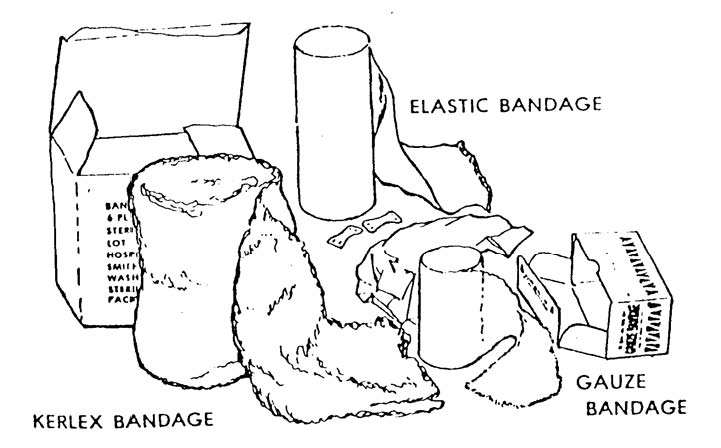Treating Fractures in the Field
Lesson 6: Roller Bandages
6-1
6-1. ROLLER BANDAGES
A roller bandage is a strip of gauze or cotton material prepared in a roll. Roller bandages can be used to immobilize injured body parts (sprains and torn muscles), provide pressure to control internal or external bleeding, absorb drainage, and secure dressings. Three types of bandages are the Kerlex bandage, the gauze bandage, and the elastic bandage (see figure 6-1).
Figure 6-1. Examples of bandages.
a. Kerlex Bandage. The Kerlex bandage is absorbent, loosely woven, and conforms easily to uneven surfaces such as the hand, wrist, elbow, shoulder, groin, knee, ankle, and foot. The Kling bandage is similar to the Kerlex bandage. These bandages are used primarily for bleeding injuries.
b. Gauze Roller Bandage. The gauze roller bandage is absorbent, loosely woven, cotton fabric. It does not conform well to uneven surfaces and is not to be used on areas prone to chafing such as shoulders, elbows, groin, and other jointed areas. It is used primarily on bleeding injuries on the upper arm, forearm, thigh, and lower leg.
c. Elastic Roller Bandage. The elastic roller bandage is composed of cloth and elastic that allows it to stretch and retract. It conforms to uneven surfaces and applies even pressure to the area covered. It is used to apply pressure and/or restrict movement. The elastic bandage is normally used when a sprain needs to be immobilized. Make sure the bandage is not tight enough to restrict blood flow unless it is used as a pressure dressing.


